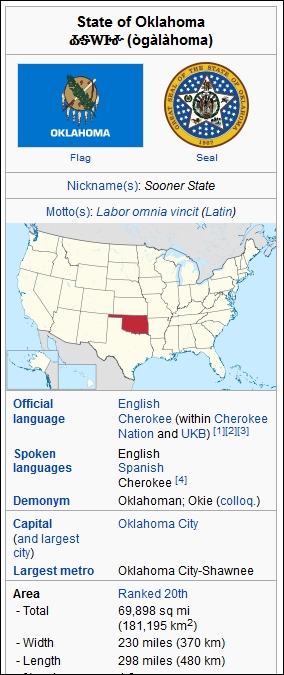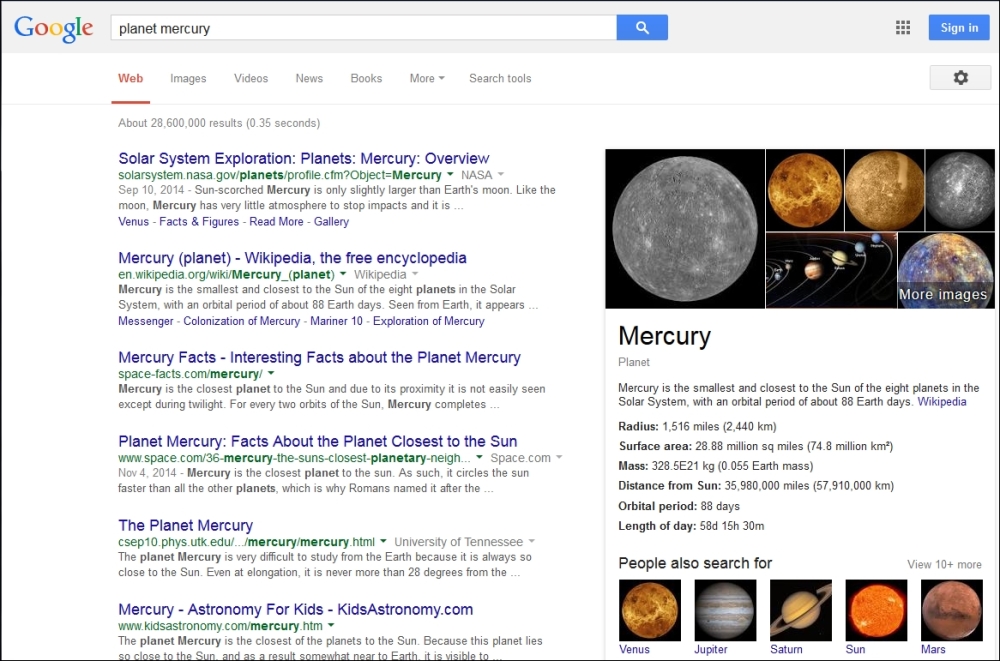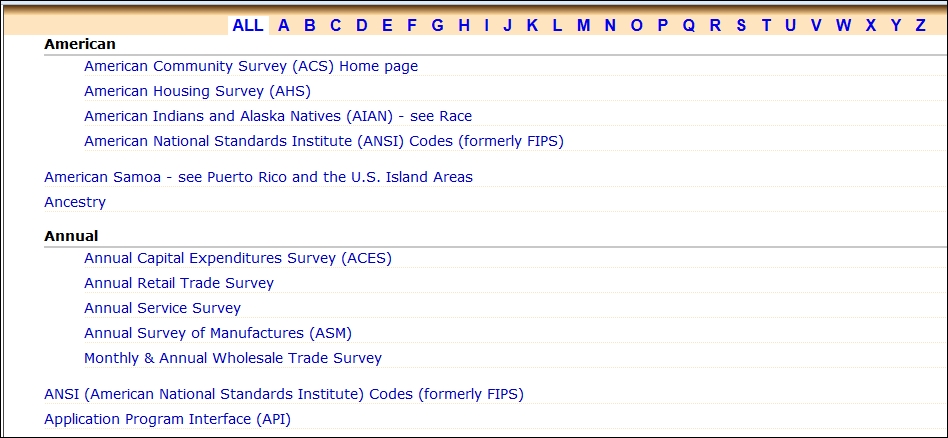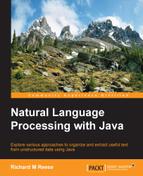Relationships extracted can be used for a number of purposes including:
- Building knowledge bases
- Creating directories
- Product searches
- Patent analysis
- Stock analysis
- Intelligence analysis
An example of how relationships can be presented is illustrated by Wikipedia's Infobox, as shown in the following figure. This Infobox is for the entry Oklahoma and contains relationships types such as official language, capital, and details about its area.

There are many databases built using Wikipedia that extract relationships and information such as:
- Resource Description Framework (RDF): This uses triples such as Yosemite-location-California, where the location is the relation. This can be found at http://www.w3.org/RDF/.
- DBPedia: This holds over one billion triples and is an example of a knowledge base created from Wikipedia. This can be found at http://dbpedia.org/About.
Another simple, but interesting example, is the Infobox that is presented when a Google search of "planet mercury" is made. As shown in the following screenshot, not only do we get a list of links for the query but we also see a list of relations and images for Mercury displayed on the right-hand side of the page:

Information extraction is also used to create Web indexes. These indexes are developed for a site to allow a user to navigate through the site. An example of a web index for the U.S. Census Bureau (http://www.census.gov/main/www/a2z) is shown in the following screenshot:

